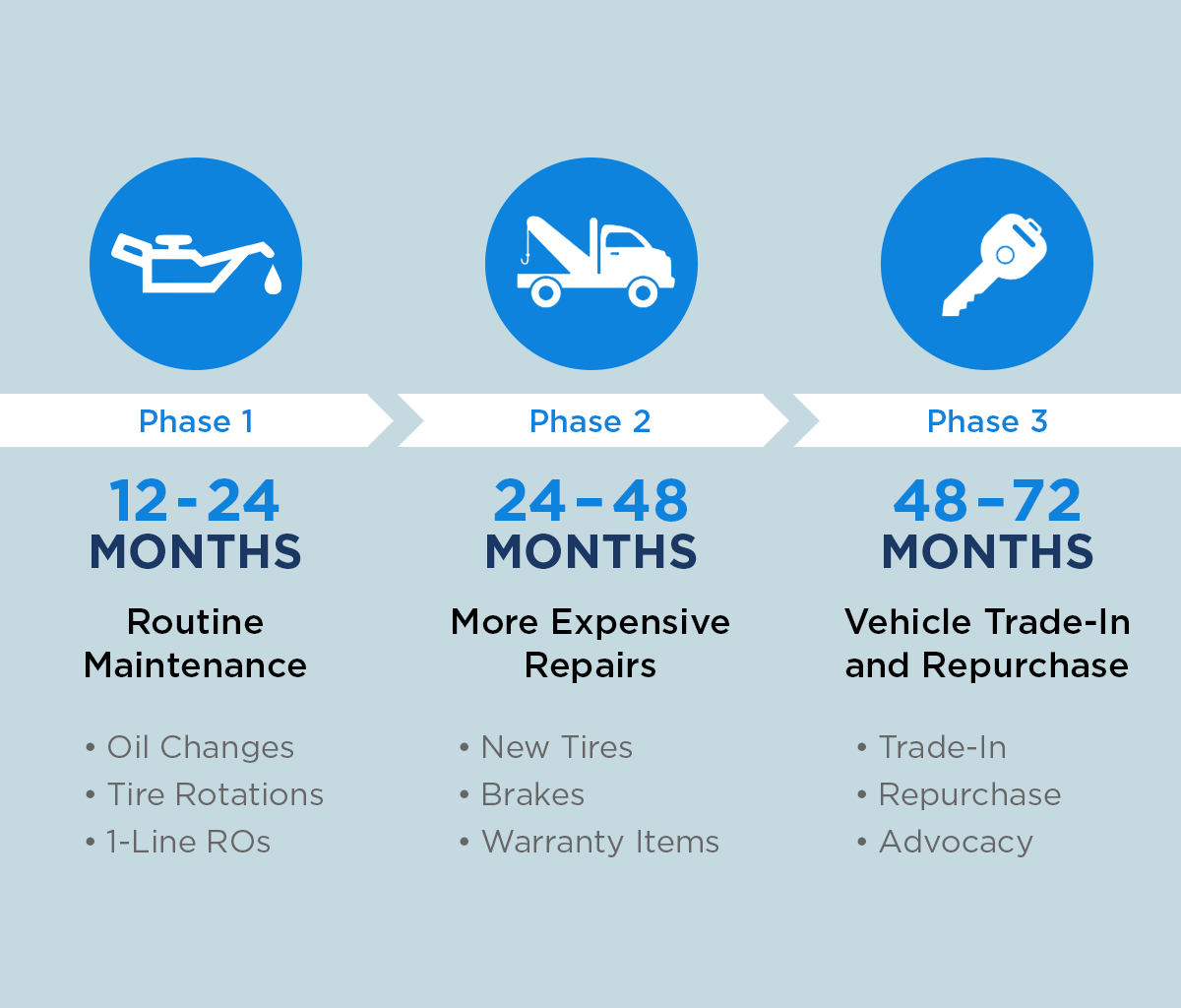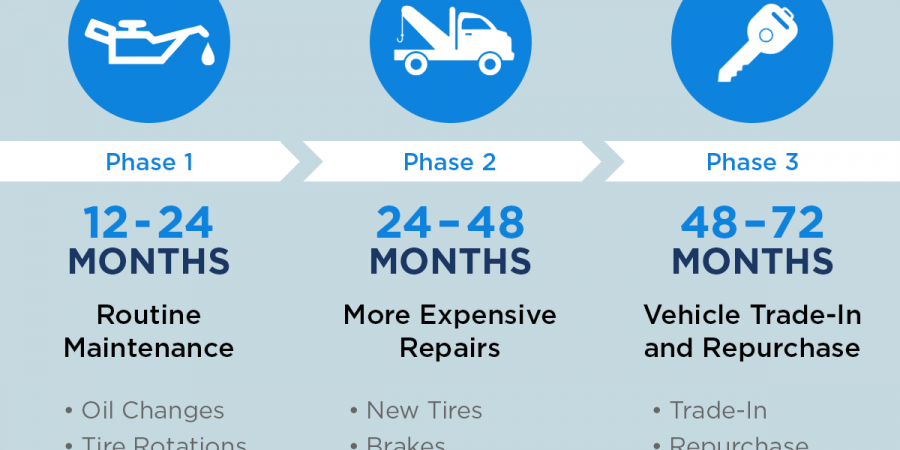How Does Complimentary Maintenance Lead to Additional Service Work?
It’s a common misconception that the goal of complimentary maintenance is only to bring customers back for oil changes. In the short-term it may look that way, but in the long-term complimentary maintenance is setting up a service habit at the issuing dealership to give dealers control of more expensive repairs, warranty work and future vehicle sales.
Oil changes are not a barrier to profitability, they are a gateway to higher profitability in the near future.
NADA Data has shown for years that customers who service at the issuing dealership are more than twice as likely to also repurchase. This is because routine service visits — such as oil changes — build relationships that bridge the gap between the initial vehicle purchase and the next vehicle purchase. That’s the true goal of a complimentary maintenance strategy.
So, how does complimentary maintenance lead to additional service work? It happens gradually in three phases:

- Phase1 / Routine Maintenance / 12-24 Months
Let’s face it,during the first 12–24 months of ownership there isn’t much service work that needs to be done other than oil changes and tire rotations. Regardless, the first two years of vehicle ownership is a crucial time because it provides a unique opportunity for building relationships that will greatly benefit the dealership and service department in the near future. - Phase 2 / More Expensive Repairs / 24-48 Months
If you’re successful inretaining customersuntil year three, these service loyal customers will begin returning for tires, brakes and more expensive repairs during the second, third and fourth year of vehicle ownership. Plus,it’s been shown that where customers return for routine service visits is also where they’ll return for warranty work— and that surely isn’t business you want to miss out on. - Phase 3 / Vehicle Trade-In and Repurchase/ 48-72 Months
The third phase of the customer retention cycle is the trade cycle, which is generally between 48 and 72 months. This is the time framethat retention-conscious dealers will start to see higher profitability and ROI on serviceretention. It’s most important that customers at the trade-in stage are servicing with the selling dealership so they have a shot of selling them their next vehicle. Here’s why. If your customer defected after the initial purchase, then there’s a good chance they won’t return to your dealership when it’s time for a trade-in. If you were successful in retaining your customers through the trade-in cycle in years four and five, your dealership is top-of-mind and customers are more likely to return to your dealership for their next vehicle purchase or trade-in. Where customers service is where they repurchase.
Let’s take a look at the flip sidescenario. What happens if you don’t retain the customer after the initial sale and instead of returning to your dealership for service, they become or remain service loyal to “their mechanic” or a mass merchandiser for all of their routine maintenance needs? The bright side of this situation is your service staff isn’t inconvenienced with oil changes that aren’t very profitable in the short-term. However, that also means your dealership is missing out on better opportunities to do more expensive work down the road.
Complimentarymaintenance serves asa bridge between sales and serviceto give every customer a reason to return to the issuing dealership for service, instead of a competing service provider. It’s during this courtship period that dealersneed to take great care with every customer to turn them into ambassador’s and earn future opportunities for more expensive repairs and return buyers.
Want to chat about your service retention strategy? Book some time on my calendar.


